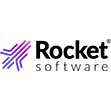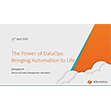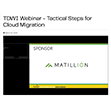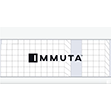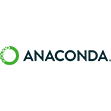

(Victoria 1/Shutterstock)
The cloud is unavoidable these days, as it has become the default infrastructure for many data workloads. But cracks are appearing in the cloud’s walls, thanks to cost overruns and fear of lock-in. Those are just some of the concerns shared by industry experts as they predict what 2023 will bring.
Cloud cost optimization is on many tech executives’ minds, and that will inevitably lead many workloads back on-prem, says Jonathan Symonds, CMO of object storage vendor MinIO.
“At the end of the day, for known workloads, there is going to be a very strong pull for repatriation. We’re seeing that with our customer base now,” Symonds says. “You go to the cloud for developer agility, for elasticity, for flexibility. But once you are done optimizing for that, you optimize for cost. And when you optimize for cost, you basically are going to pull it back down. You’re either going to go to an Equinix co-lo and lease it or you’re going to buy a bunch of Supermicro boxes and run it there. So we think there’s a huge wave coming in that regard. That I think is going to be what we look for in 2023.”
In 2023, having a multi-cloud strategy will be important, says Haoyuan Li, founder and CEO, Alluxio. And so will cost optimization, he adds.
“As more organizations evolve their data strategies in 2023, multi-cloud data infrastructure adoption is accelerating and will become the new norm. Organizations are expected to embrace this trend and ensure their cloud applications are portable regardless of cloud provider,” Li predicts. “Even though the public cloud has catalyzed the growth of countless companies, the global economic uncertainties will drive large organizations with data-intensive workloads to recalibrate their cloud strategies with a higher emphasis on cost optimization, such as reducing egress costs. The focus will be on the ROI and TCO of their infrastructure, either in the cloud, on-premises, or both.”
Cloud-first will be a good bet for 2023, according to Forrester, and so will going cloud-native. In fact, 40% of firms will take a cloud-native-first strategy in 2023, the analyst group says.
“Cloud decision-makers have implemented containerized applications and they account for half of the total in their organizations. Rather than plow resources into virtual machines, organizations will accelerate investment in Kubernetes as a distributed compute backbone for both current applications as well as new workloads.”
In 2023, tech executives will recognize that having a cloud-first strategy makes sense, but having a cloud-only strategy does not, says Jesse Stockall, chief architect at Snow Software
“We are still working on reigning in cloud spend and where to appropriately place workloads,” he writes. “A few years ago, some believed on-premise hosting was dying, but this has not been the case. On-prem has a use and a purpose, and it works within a more traditional finance model. However, you need to do what works best for your industry, your skillset and your capacity. Migrating to the cloud or moving to on-prem to save money requires investment as both are niche expertise. Some organizations have completely shifted to the cloud, but we are currently in a hybrid world. Moving into 2023, companies must follow a cloud-first strategy, not a cloud-only strategy.”
Want to have maximum security in a hybrid world in 2023? (Of course you do!) Then you will need to be on the public cloud, says Google Cloud’s CISO Phil Venables.
“On-premise environments cannot maintain the same default level of security as cloud environments can in today’s hybrid world,” Venables says. “The base security of the cloud, coupled with an organization’s protected configuration, will be stronger than what any on-prem environment can realistically offer.”
Having a free open source product is good. So is having a software-as-a-service (SaaS) offering. But having both free open source and SaaS together? Now that’s a recipe for greatness, says Nima Negahban, the CEO and co-founder of Kinetica.
“When open-source software hit the data analytics scene, interest and adoption skyrocketed as organizations cited the benefits of cost effectiveness, speed and agility, community, and avoiding vendor lock in,” Negahban says. “What most companies learned was that many projects required extensive set up, integration, and maintenance that slowed both innovation and migration to the cloud. SaaS models will continue delivering on the promise and speed and agility, while reducing switching costs. Emerging Free Forever SaaS models will further make these offerings cost effective and facilitate robust developer communities.”
The future of the cloud is open, and in 2023, the cloud giants will begin to recognize this, says Steven Mih, co-founder and CEO of Ahana, a provider of Presto analytics services in the cloud.
“As the market further chooses open options for table formats, compute engines, and interfaces, the Lakehouse version of the LAMP stack will emerge. Linux Foundation and Apache Software Foundation projects will constitute those components,” Mih says. “As data and analytics workloads proliferate in the public cloud accounts, and as IT departments demand more control of their own data and applications, we’ll see the adoption of more cloud native managed services instead of full SaaS solutions. Public cloud providers will make huge investments into open source software, and make more contributions back to the community.”
Rapid cloud growth has led to some messiness, but in 2023, some of that messiness will start to be reigned in through a “metacloud” or even a “supercloud,” predicts Deloitte’s Chief Futurist Mike Bechtel.
“Ten years of heterogeneous multicloud deployments has created considerable complexity in cloud management,” Bechtel says. “Enterprises are bringing simplicity and visibility through a common layer of abstraction and automation (called metacloud or supercloud). With these cross-cloud services managing operations, governance and security, organizations can take full advantage of cloud versatility, elasticity, flexibility, and scalability.”
The push for greater control over cloud costs will mark 2023, says Dima Spivak, COO of products at StreamSets (a Software AG company).
“There will be a greater focus on efficiency and cost-benefit for users of cloud solutions,” Spivak writes. “Companies have spent years moving data into cloud-hosted data warehouses and data lakes and, especially with uncertainty in the economy, leadership will be expected to justify the existing spend and control it moving forward. Technology companies that can provide complete end-to-end solutions for businesses undergoing digital transformation will have a significant advantage over those that don’t. As businesses look to see returns on their digital transformation investments, time-to-value and battle-tested solutions will be highly sought-after.”
As companies look to modernize their data architectures, a multi-cloud strategy will be front and center, says Balaji Ganesan, the CEO and co-founder of Privacera.
“In terms of adopting a multi-cloud environment, most enterprise-level organizations are in the ambitious early stages of migration and still have a lot of data that needs to be moved. There are some ‘born in the cloud’ enterprises that are fully integrated and working well. But over the next year, we expect the adoption of multi-cloud services to continue to rise as a majority of business leaders look to modernize their data architecture,” he says. “Since more organizations have shifted away from a single cloud solution when it comes to implementing their data strategies, we’ll see many business leaders faced with the challenge of deciding which service providers they actually want to mix and match. To help make those important decisions, we expect business leaders to take a ‘best of breed’ strategic approach that looks at individual organizational use cases.”
The “green tsunami” will hit in 2023, and the path to sustainability will travel through the cloud, says Lloyd Adams, president of SAP North America.
“Business leaders have traditionally focused on top and bottom-line performance indicators. But as changing consumer demands–coupled with stricter government regulations around ESG reporting among other laws–[it will] push companies toward greener practices, organizations will increasingly consider their green line as the leading indicator of long-term, sustainable business success,” he writes. “As a result, more companies will leverage the efficiency of the cloud to meet their sustainability goals in 2023, with a focus on achieving not just financial performance but also steering positive environmental and social impact through their sustainability metrics.”
Don’t overlook the potential of hybrid cloud architectures to boost tape sales, according to Phil Storey, the CEO of XenData.
“Hybrid cloud storage means different things to different people,” he says. “For many, combining file and object access to the same storage system allows their organization to use both file-based and native-cloud applications to address the same unstructured content. A combined file/object storage approach provides a smooth path to hybrid cloud storage. And this is not just limited to disk-based object storage, as the increasing availability of file/object storage interfaces for on-premises tape archives allows users to take advantage of the reliability and economies of data tape for active archives.”
A more defensive posture among companies in 2023 will help illuminate the benefits of hybrid cloud storage and tape, says IBM Business Line Executive Data Retention Infrastructures Product Manager Kiyoshi Urabe.
“Data center leaders will be evaluating technology based on cost and ESG impact. This will drive processes to move data to lower energy consumption models, models like moving data directly from operational flash to tape,” Urabe says. “Tape’s low cost of acquisition, low total cost of ownership, and sustainable design make it an ideal candidate in these infrastructures. Growth in tape hardware and media capacity shipments is expected to continue in 2023.”
Related Items:
Big Things Ahead for AI in 2023: Predictions
Analytics Predictions for 2023
Unleash the 2023 Big Data Predictions!
September 11, 2025
- MinIO Brings Hyperscaler Economics On-Prem with AIStor Pods
- Honeycomb Introduces the Developer Interface of the Future with AI-Native Observability Suite
- AdaParse: Smart PDF Processing for Scientific AI Training
September 10, 2025
- Progress Software Launches SaaS RAG Platform for Verifiable Generative AI
- Sigma Reveals New AI, BI, and Analytics Features, Redefining Data Exploration Capabilities for Customers
- Couchbase Shareholders Approve Acquisition by Haveli Investments
- Plotly Launches Studio and Cloud with GA as Vibe Analytics Event Approaches
- Expert.ai Launches Enhanced Solutions for Digital Information Services
- ThoughtSpot Redefines Analytics with Boundaryless, Agentic Intelligence
- Perforce Expands AI Capabilities to Boost Speed and Security in Software Development
- DiffusionData Releases Diffusion 6.12
September 9, 2025
- Algolia Unlocks Clean, Contextual Data at Scale with Introduction of Intelligent Data Kit
- CTERA Announces IntelliVerse 2025: A Free Virtual Forum on Data Readiness and AI in Digital Transformation
- Pliops Showcases XDP LightningAI’s Proven Impact at AI Infra Summit 2025
- MLCommons Releases New MLPerf Inference v5.1 Benchmark Results
- Monte Carlo Launches Agent Observability to Help Teams Build Reliable AI
- Sphinx Launches with $9.5M to Redefine How AI Works with Data
- NetApp Modernizes Object Storage with Enhanced Speed, Scalability and Security
- Sourcetable Launches Superagents to Bring Autonomous AI Into the Spreadsheet
- CoreWeave Launches Ventures Group to Invest in Future of AI
- Inside Sibyl, Google’s Massively Parallel Machine Learning Platform
- What Are Reasoning Models and Why You Should Care
- Rethinking Risk: The Role of Selective Retrieval in Data Lake Strategies
- Beyond Words: Battle for Semantic Layer Supremacy Heats Up
- Software-Defined Storage: Your Hidden Superpower for AI, Data Modernization Success
- The AI Beatings Will Continue Until Data Improves
- Why Metadata Is the New Interface Between IT and AI
- Top-Down or Bottom-Up Data Model Design: Which is Best?
- How to Make Data Work for What’s Next
- What Is MosaicML, and Why Is Databricks Buying It For $1.3B?
- More Features…
- Mathematica Helps Crack Zodiac Killer’s Code
- GigaOm Rates the Object Stores
- Solidigm Celebrates World’s Largest SSD with ‘122 Day’
- Promethium Wants to Make Self Service Data Work at AI Scale
- Databricks Now Worth $100B. Will It Reach $1T?
- AI Hype Cycle: Gartner Charts the Rise of Agents, ModelOps, Synthetic Data, and AI Engineering
- Data Prep Still Dominates Data Scientists’ Time, Survey Finds
- Career Notes for August 2025
- MIT Report Flags 95% GenAI Failure Rate, But Critics Say It Oversimplifies
- Anaconda Report Links AI Slowdown to Gaps in Data Governance
- More News In Brief…
- Seagate Unveils IronWolf Pro 24TB Hard Drive for SMBs and Enterprises
- Gartner Predicts 40% of Generative AI Solutions Will Be Multimodal By 2027
- DataSnap Expands with AI-Enabled Embedded Analytics to Accelerate Growth for Modern Businesses
- Acceldata Announces General Availability of Agentic Data Management
- Hitachi Vantara Recognized by GigaOm, Adds S3 Table Functionality to Virtual Storage Platform One Object
- Transcend Expands ‘Do Not Train’ and Deep Deletion to Power Responsible AI at Scale for B2B AI Companies
- Pecan AI Brings Explainable AI Forecasting Directly to Business Teams
- SETI Institute Awards Davie Postdoctoral Fellowship for AI/ML-Driven Exoplanet Discovery
- NVIDIA: Industry Leaders Transform Enterprise Data Centers for the AI Era with RTX PRO Servers
- Ataccama Data Trust Assessment Reveals Data Quality Gaps Blocking AI and Compliance
- More This Just In…




















